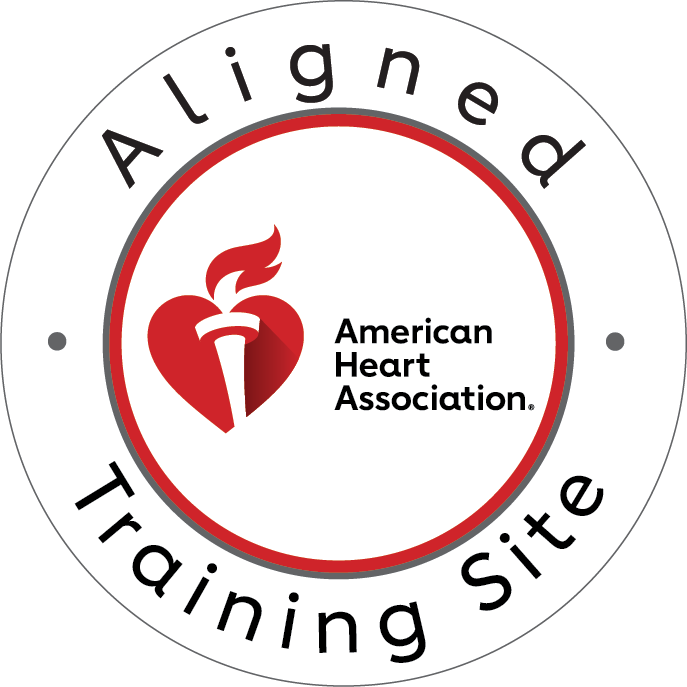In the fast-paced environment of healthcare, especially when dealing with pediatric patients, preparedness can mean the difference between life and death. Pediatric Advanced Life Support (PALS) training equips healthcare providers with the necessary skills and knowledge to effectively manage pediatric emergencies. However, before diving into the rigorous training, there’s a crucial step that lays the foundation for success: the AHA PALS Pretest.
AHA PALS Pretest serves as the initial checkpoint on the journey toward pediatric emergency preparedness. It’s a comprehensive assessment designed to evaluate healthcare professionals’ readiness to respond to pediatric cardiac emergencies. From assessing theoretical knowledge to practical skills, this pretest sets the stage for tailored training, ensuring that healthcare providers are equipped to handle the unique challenges of pediatric emergencies with confidence and competence.

Understanding the AHA PALS Pretest
Before delving into the specifics of the AHA PALS Pretest, it’s essential to grasp its fundamental purpose and components.
A. Definition and Purpose
The AHA PALS Pretest is a standardized assessment administered by the American Heart Association (AHA) to evaluate healthcare professionals’ proficiency in pediatric advanced life support. Its primary goal is to gauge participants’ knowledge, skills, and readiness to manage pediatric cardiac emergencies according to the latest guidelines and protocols.
B. Components of the Pretest
- Written Exam
- The written exam assesses participants’ theoretical understanding of pediatric advanced life support concepts, including but not limited to, pediatric assessment, basic life support (BLS), advanced airway management, cardiac rhythms, pharmacology, and post-resuscitation care.
- Questions are typically multiple-choice or scenario-based, requiring critical thinking and application of knowledge in real-life situations.
- Skills Assessment
- The skills assessment portion evaluates participants’ ability to perform essential PALS procedures, such as pediatric assessment, high-quality CPR, defibrillation, bag-mask ventilation, intraosseous access, and medication administration.
- Participants may be required to demonstrate competency in various scenarios, simulating pediatric cardiac arrests and other emergencies.
C. Who Should Take the Pretest
- The AHA PALS Pretest is recommended for healthcare professionals who are involved in the management of pediatric patients, including but not limited to, physicians, nurses, paramedics, respiratory therapists, and other allied healthcare providers.
- Individuals seeking initial PALS certification or recertification are typically required to complete the pretest as part of the certification process.
D. Frequency of Pretesting
- The frequency of AHA PALS Pretesting may vary depending on institutional policies, regulatory requirements, and individual preferences.
- Healthcare providers are often encouraged to undergo pretesting before participating in formal PALS training courses to assess their baseline knowledge and skills. Additionally, periodic pretesting may be recommended as part of ongoing competency assessment and quality improvement initiatives.
By understanding the components and purpose of the AHA PALS Pretest, healthcare professionals can appreciate its role in ensuring their preparedness to effectively respond to pediatric cardiac emergencies. In the subsequent sections, we’ll explore the myriad benefits that pretesting offers and delve into strategies for optimal preparation and success.
Benefits of the AHA PALS Pretest
Now that we’ve established an understanding of what the AHA PALS Pretest entails, let’s explore the numerous benefits it offers to healthcare professionals and, ultimately, the pediatric patients they serve.
A. Identifying Knowledge Gaps:
- One of the primary benefits of the AHA PALS Pretest is its ability to pinpoint areas of strength and weakness in participants’ knowledge base.
- By undergoing the pretest, healthcare providers gain insights into specific topics or skills that may require further review or reinforcement.
- Identifying knowledge gaps early on allows individuals to focus their study efforts efficiently and effectively, ensuring a more comprehensive understanding of PALS principles.
B. Assessing Skill Proficiency:
- In addition to evaluating theoretical knowledge, the pretest assesses participants’ proficiency in performing critical PALS skills.
- Through hands-on simulations and skills stations, healthcare providers demonstrate their ability to execute essential interventions, such as high-quality CPR, airway management, and defibrillation, in simulated pediatric emergencies.
- This practical assessment not only validates participants’ skill competency but also instills confidence in their ability to perform effectively in real-life scenarios.
C. Tailoring Training to Individual Needs:
- Armed with insights from the pretest, healthcare providers and training facilitators can tailor PALS training programs to meet participants’ specific learning needs.
- Customizing the curriculum allows for targeted instruction and remediation in areas where participants may require additional support.
- By addressing individual learning gaps and preferences, training becomes more engaging, relevant, and ultimately, more effective in preparing healthcare providers for pediatric emergencies.
D. Boosting Confidence and Readiness:
- Perhaps one of the most significant benefits of the AHA PALS Pretest is its role in boosting participants’ confidence and readiness to respond to pediatric cardiac emergencies.
- By undergoing rigorous assessment and targeted training, healthcare providers gain a sense of preparedness and competence in managing critical situations.
- This increased confidence translates into improved clinical performance and better outcomes for pediatric patients, as healthcare providers approach emergencies with a calm and assured demeanor.
In essence, the AHA PALS Pretest serves as a vital tool in the arsenal of pediatric emergency preparedness, offering healthcare professionals invaluable insights, skills validation, and confidence to navigate the complexities of pediatric resuscitation.
How to Prepare for the AHA PALS Pretest
Preparing for the AHA PALS Pretest is a critical step in ensuring success and confidence in managing pediatric emergencies. By adopting a strategic approach to preparation, healthcare providers can maximize their learning outcomes and performance on the pretest. Here are some practical strategies to help you effectively prepare:
A. Study Materials and Resources:
- Utilize AHA-approved PALS textbooks, manuals, and guidelines as primary study resources. These materials provide comprehensive coverage of PALS concepts and protocols.
- Explore online resources, such as AHA’s official website, which offers interactive learning modules, practice quizzes, and educational videos to reinforce key concepts.
- Consider joining study groups or online forums where healthcare professionals share study tips, discuss challenging topics, and offer support to one another.
B. Practice Exams and Simulations:
- Take advantage of practice exams and simulations to familiarize yourself with the format and content of the AHA PALS Pretest.
- Seek out reputable online platforms or training providers that offer simulated PALS scenarios and practice tests.
- Engage in hands-on practice sessions with colleagues or simulation equipment to simulate real-life pediatric emergencies and reinforce procedural skills.
C. Hands-on Training Opportunities:
- Participate in PALS training courses offered by accredited training centers or institutions. These courses provide hands-on instruction, interactive simulations, and expert guidance from experienced instructors.
- Attend workshops or seminars focused on pediatric emergency management, which offer practical skills training and opportunities for peer collaboration and feedback.
- Take advantage of clinical rotations or observational experiences in pediatric emergency departments to gain exposure to real-life scenarios and patient care practices.
D. Guidance from Experienced Instructors:
- Seek mentorship and guidance from experienced PALS instructors or colleagues who have expertise in pediatric emergency care.
- Don’t hesitate to ask questions, seek clarification, and request additional practice opportunities during training sessions.
- Take advantage of debriefing sessions following simulated scenarios or practice drills to reflect on performance, identify areas for improvement, and receive constructive feedback.
By following these proactive preparation strategies, healthcare providers can enhance their readiness and confidence for the AHA PALS Pretest. Remember that preparation is key to success, and investing time and effort in comprehensive study and practice will ultimately contribute to improved patient outcomes in pediatric emergencies.
Tips for Success
As you approach the AHA PALS Pretest, it’s essential to maintain a strategic mindset and adopt effective study habits. Here are some invaluable tips to help you maximize your preparation and performance:
A. Start Preparation Early:
- Begin studying well in advance of the pretest date to allow ample time for comprehensive review and practice.
- Break down your study material into manageable segments and create a study schedule to cover all topics systematically.
B. Focus on Areas of Weakness:
- Identify your areas of weakness through practice exams, simulations, and self-assessment.
- Allocate extra time and attention to these areas during your study sessions to strengthen your understanding and proficiency.
C. Utilize Interactive Learning Methods:
- Engage in active learning techniques, such as group discussions, hands-on simulations, and interactive online modules.
- Utilize mnemonics, visual aids, and other memory aids to reinforce key concepts and retain information effectively.
D. Stay Calm and Confident During the Pretest:
- Practice relaxation techniques, such as deep breathing and visualization, to manage test anxiety and stay focused during the pretest.
- Trust in your preparation and skills, and approach the pretest with a positive mindset and confidence in your abilities.
Remember that success on the AHA PALS Pretest is not solely determined by the outcome but by the effort and dedication you put into your preparation. Stay committed to your study regimen, seek support from peers and mentors, and maintain a proactive approach to learning. By following these tips, you’ll be well-equipped to excel in the pretesting process and, more importantly, in providing optimal care to pediatric patients during emergencies.
In conclusion, the AHA PALS Pretest serves as a pivotal milestone in the journey toward pediatric emergency preparedness. By understanding its significance, preparing diligently, and approaching it with confidence, healthcare providers can ensure their readiness to respond effectively to pediatric cardiac emergencies. As you embark on this endeavor, remember that every effort you invest in preparation contributes to the lifesaving care you provide to pediatric patients in their time of need.




